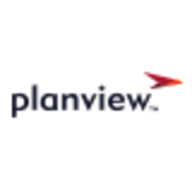

Planview AdaptiveWork and Asana are project management solutions competing in delivering efficient task and project coordination. Asana seems to have the upper hand due to its rich feature set, although at a higher cost, while Planview AdaptiveWork is highlighted by users for its affordability and supportive customer service.
Features: Planview AdaptiveWork stands out with its advanced portfolio management, resource allocation capabilities, and customizable workflows, making it ideal for large enterprises needing detailed planning. Asana excels in intuitive task management, team collaboration, and various view options like Gantt chart and Kanban boards, appealing to teams of diverse sizes by ensuring ease of use and flexibility in operation.
Room for Improvement: Planview AdaptiveWork could improve its user interface for a smoother experience, possibly addressing its noted steeper learning curve and enhancing integration with other popular tools. Asana can expand its reporting tools to offer deeper analytical insights, streamline its mobile app functionalities, and potentially reduce pricing to become more cost-competitive.
Ease of Deployment and Customer Service: Asana offers an easy cloud-based deployment noted for its simplicity and user-friendly interface. It provides comprehensive support services that facilitate new user adoption. Planview AdaptiveWork also delivers a complete cloud solution, albeit with a more complex onboarding process, offset by personalized customer support that caters to individual setup needs.
Pricing and ROI: Planview AdaptiveWork is regarded as budget-friendly, offering favorable ROI for organizations with complex requirements and constraints. Asana, while more expensive, justifies the cost with its robust feature offerings and has been perceived as providing value for its ease and flexibility.
| Product | Market Share (%) |
|---|---|
| Asana | 4.9% |
| Planview AdaptiveWork | 1.6% |
| Other | 93.5% |


| Company Size | Count |
|---|---|
| Small Business | 38 |
| Midsize Enterprise | 7 |
| Large Enterprise | 6 |
| Company Size | Count |
|---|---|
| Small Business | 2 |
| Midsize Enterprise | 1 |
| Large Enterprise | 4 |
Asana is web-based software-as-a-service that helps teams coordinate and manage their work. It helps companies move faster by making sure everyone knows the team’s plan and process and who is doing what by when.
Each user can create projects using a list, board, calendar, or timeline view. Within each project, users can add tasks, subtasks, sections, comments, attachments, start and due dates, and custom fields. Project and task followers get notifications on changes or comments on the project and/or task in their Inbox. Individual users can see all of the tasks they're responsible for across all of their projects in a view called My Tasks.
Asana is available in English, French, Spanish, German, and Portuguese.
AdaptiveWork services the project management software needs of more than 2,500 companies in 76 countries worldwide. They boast a robust client list, including companies such as: Chanel, Cisco, The Walt Disney Company, EA, FedEx, HP, UPS, and VMWare. Founded in 2006, their goal is to change the way collaboration happens within companies of all sizes. AdaptiveWork focuses strongly on the fact that transparency, communication, and idea sharing are key in effective business models.
AdaptiveWork uses the cloud and social communications in their software. This helps AdaptiveWork project management software provide real time updates, maximize efficiency of collaboration, and keep all team members productive and on the same page. AdaptiveWork is fully configurable, and is designed to scale and adapt to different organizational needs. Their task management software is easy to implement, meaning start up will not cost clients time away from their work.
AdaptiveWork offers an enterprise-class project management software solution that fits all businesses' project management needs. With a name created from the words "Clarity" and "Zen", AdaptiveWork's software is designed to help businesses collaborate effectively and create true peace of mind. Project management software doesn't just help get work done; it helps create stronger and more efficient teams. By keeping everyone on the same page, AdaptiveWork task management software helps your team stay focused on the goal of your project.
We monitor all Project Management Software reviews to prevent fraudulent reviews and keep review quality high. We do not post reviews by company employees or direct competitors. We validate each review for authenticity via cross-reference with LinkedIn, and personal follow-up with the reviewer when necessary.